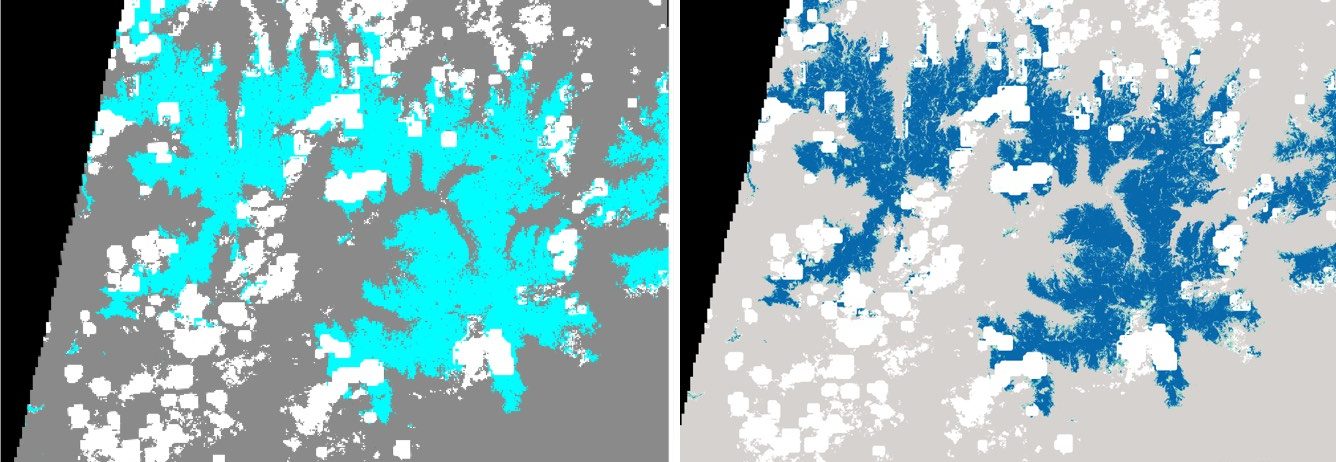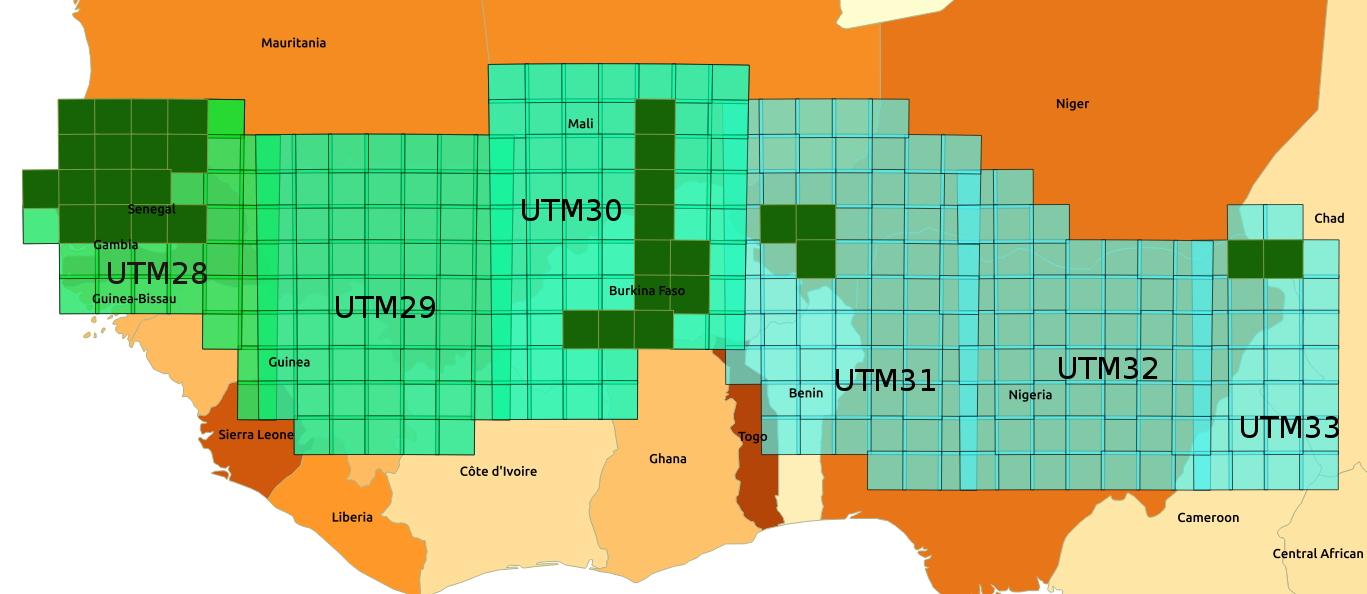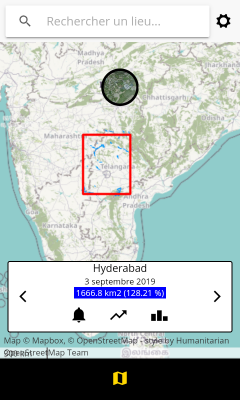Upgrade of let-it-snow to compute the fractional snow cover
In preparation for the next Pan European high resolution snow and ice monitoring service, I have upgraded the let-it-snow (LIS) processor to enable the computation of the fractional snow cover (FSC) within the pixel.
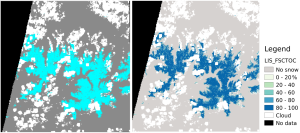
So far LIS was only used to compute a « binary snow mask » (in fact ternary: snow, no-snow, cloud). However, the EEA requested that the service provides the snow fraction in every 20 m Sentinel-2 pixel. The EEA also specified that the FSC should be computed from the Normalized Difference Snow Index. Hence, the latest version of the LIS processor (currently in the develop branch) can now read a custom function in the configuration file to compute the FSC from the NDSI (see this template).
In forest areas, the function f(NDSI) provides a “top-of-canopy” FSC (FSCTOC), which can be adjusted based on the tree cover density (TCD) to estimate the “on-ground” FSC (FSCOG) (Raleigh et al., 2013).
$$FSC_{OG} = FSC_{TOC} / (1-TCD)$$
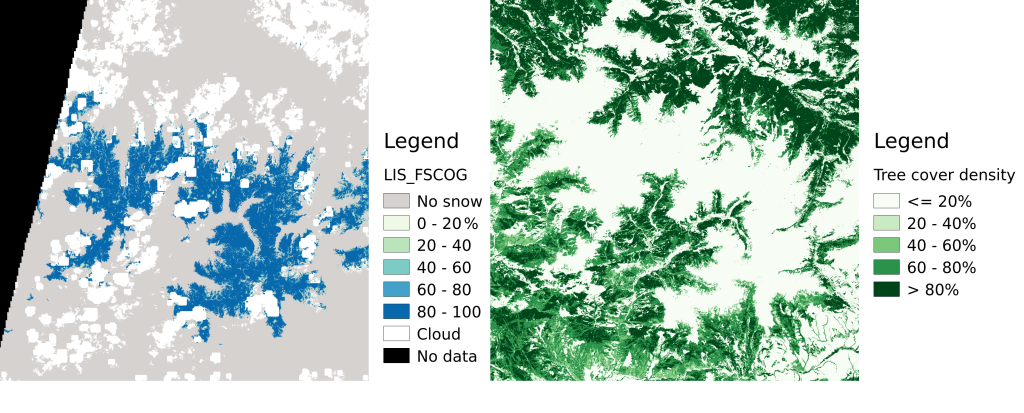
The TCD is given at 20 m resolution by the Copernicus High Resolution Layer Tree Cover Density status map (current release is 2015). The example below illustrates how this correction increased the snow fraction near the edges of the snow cover area, where the forest partially masked the snow cover.
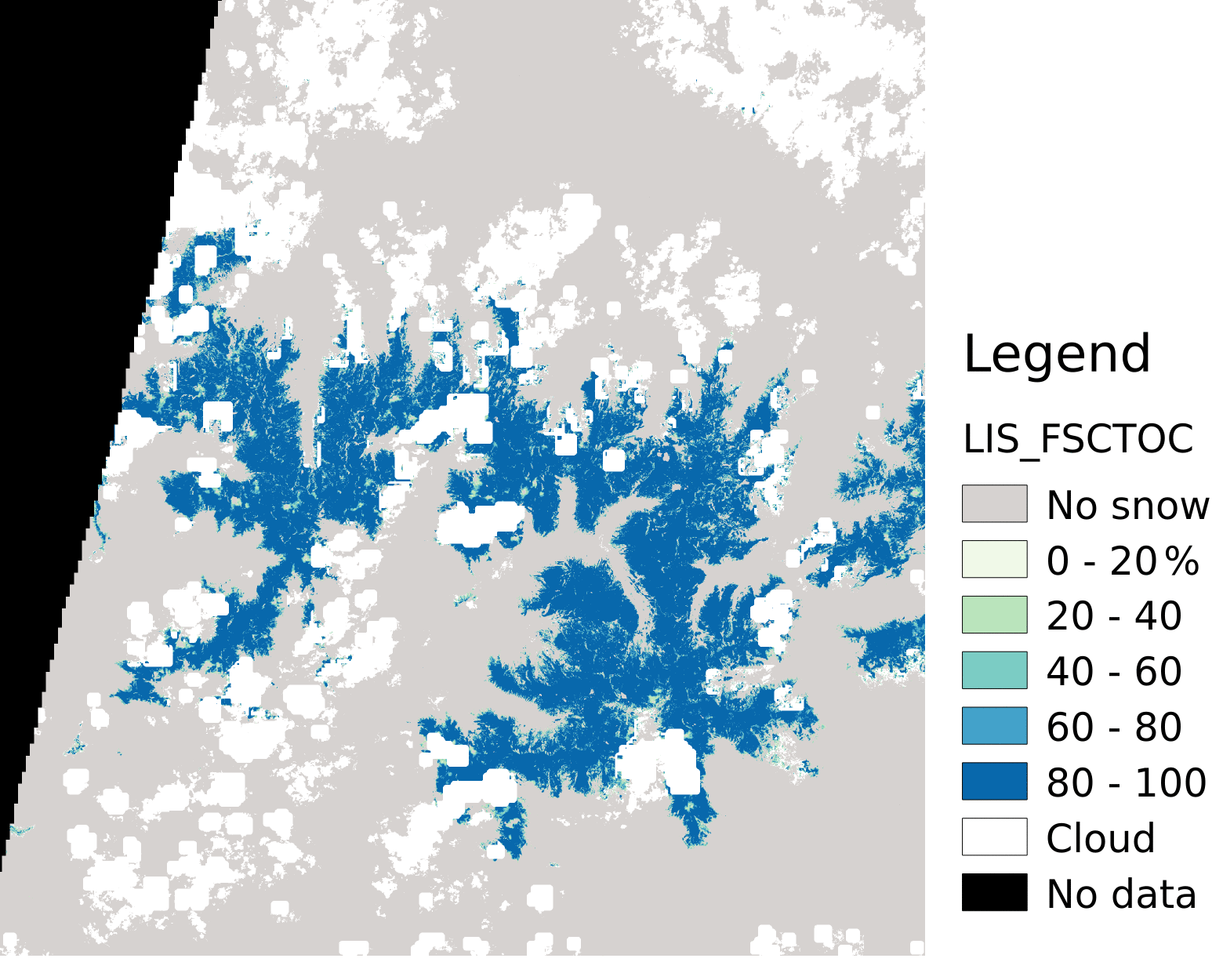
We will now focus on the calibration of the FSC=f(NDSI) function using ground truth data (read this if you’re interested in contributing!).

